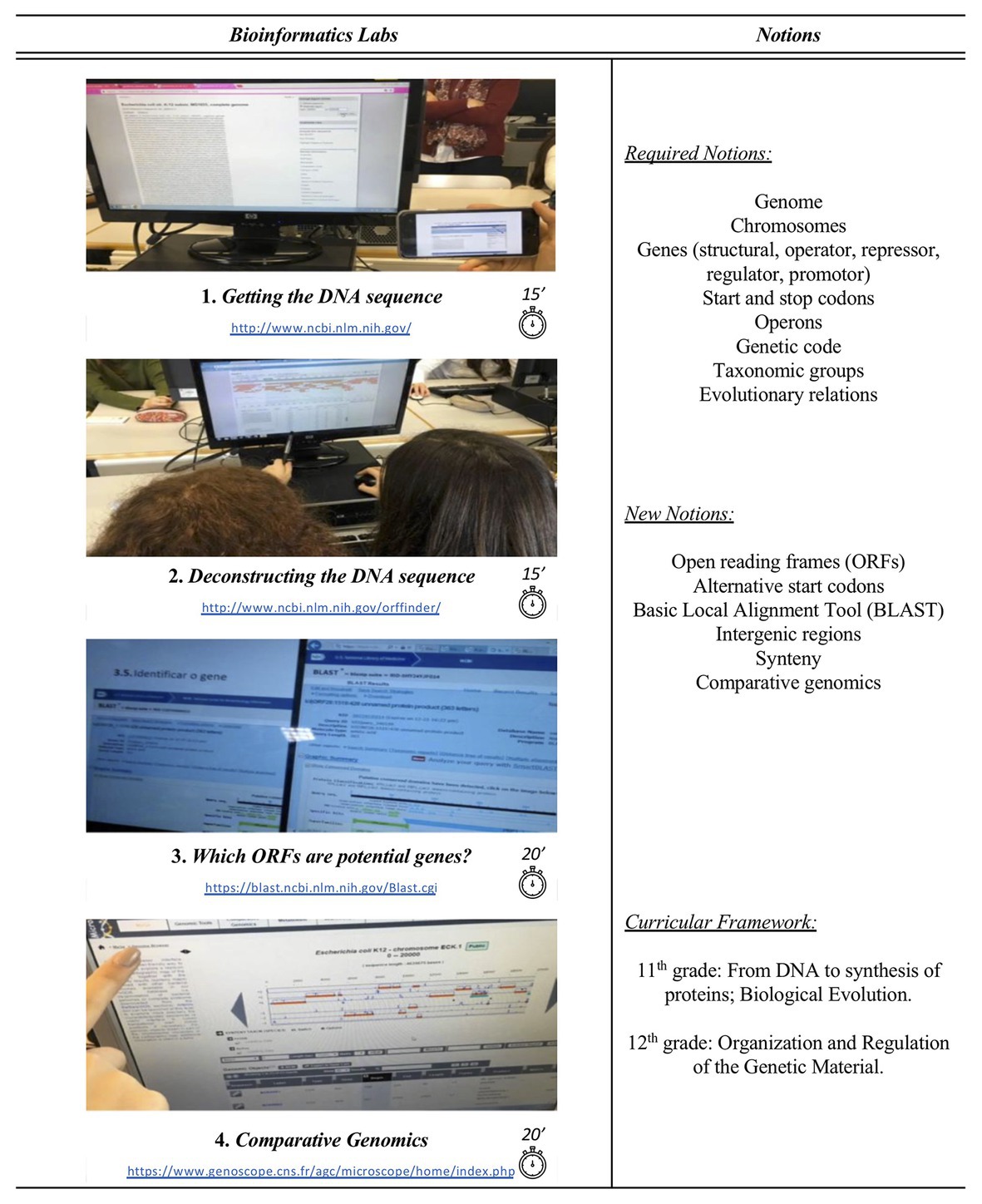Some Known Facts About Bioinformatics Tutor.
Some Known Facts About Bioinformatics Tutor.
Blog Article
Not known Facts About Bioinformatics Tutor
Table of ContentsThe Bioinformatics Tutor DiariesSome Of Bioinformatics TutorAbout Bioinformatics TutorBioinformatics Tutor Fundamentals ExplainedHow Bioinformatics Tutor can Save You Time, Stress, and Money.
Of the overall individuals associated with the training, 80% were students from public college institutions, while the staying 20% originated from private establishments. To receive a certificate of participation, trainees were needed to go to a minimum of 90% of the total training hours. As an outcome of this requirement, an outstanding 95% of the participants effectively obtained their certifications, having not only fulfilled the minimum presence criteria yet likewise completed all designated tasks throughout the training.
During the elevation of the COVID-19 pandemic, particularly in between June and August 2020, the project group was tasked with arranging specialized training in bioinformatics. This training was specifically targeted at pupils from the study group Core for Study in Applied Computer at the Federal University of Pará (UFRA) The adjustment to remote learning platforms because of the pandemic created an opportunity to explore new mentor methodologies and electronic tools that improved both reach and performance.
This course was designed to give an available yet detailed overview of Artificial Knowledge techniques, specifically as used in bioinformatics (Bioinformatics Tutor). This digital style made it possible for involvement from pupils across Brazil, numerous of whom may not have had the opportunity to participate in in-person sessions.
All About Bioinformatics Tutor
Around 50% of the complete training hours were devoted to sensible tasks where students constructed smart versions and applications in an array of clinical domains, consisting of genetics, molecular biology, and environmental data analysis. These systems enabled students to involve in real-time data adjustment, model training, and algorithm experimentation.
Sixty of them were associated with various higher education establishments in the state of Pará, while the staying twenty came from establishments situated in 5 various other Brazilian states. By introducing Artificial Knowledge in a pertinent and sensible context, the effort served to bridge the space in between theory and real-world application, providing trainees with a solid foundation for future research or employment in the area.
The training initiative created part of a wider scholastic outreach effort referred to as the Bioinformatics on the Roadway project. This project has, over the years, presented dozens of students to the world of bioinformatics and computational biology. The occasions held under this umbrella initiative have actually happened across several areas and years, as summed up in Table 1 (Checklist of events, locations, years, and complete numbers of trainees and trainers)
Several of these groups, at first brought with each other by their involvement in training events, have because gone on to generate independent clinical research study in cooperation with local academic institutions. The training not just fostered clinical reasoning within the context of bioinformatics yet likewise triggered collective connections that expanded past the training atmosphere.
Bioinformatics Tutor Can Be Fun For Everyone
The task itself was conceptualized and organized by MB and RR, that looked after the planning and application of each action. Lectures were provided my company by a multidisciplinary team containing megabytes, FA, EF, KP, JS, DM, SN, LP, LG, RR, ac, and ih. The exact same team, excluding IH and RR, also functioned as tutors for the useful training modules. Financing for the project was offered via the grant 88887.200562/ 2018-00 from CAPES. The writers expand their appreciation to everyone who contributed to the awareness of this job, whether directly or indirectly, given that its creation.
The Federal University of Pará's Office of Research study (PROPESP/UFPA) likewise provided monetary support, specifically for the manufacturing of the final manuscript. The authors proclaim no economic or business conflicts of passion that could have influenced the research study. All interpretations and point of views expressed in this short article are solely those of the writers and do not necessarily reflect those of their corresponding organizations, the author, editors, or reviewers included in the magazine procedure.

Rumored Buzz on Bioinformatics Tutor
From an instructional viewpoint, the training strategy used in the training was intentionally interactive. Courses were performed in a way that urged trainee engagement and discussion, surpassing rote memorization to explore exactly how concepts are established, used in every day life, and tested in academic setups. The instructional approach concentrated on supporting both strong and struggling students, providing customized support, and building self-confidence via sustained mentorship and perseverance.

Each team, including about 36 individuals, was sustained by 3 advisors-- a lot of whom were postdoctoral scientists with specialized competence. These mentors not just assisted create the group projects but likewise facilitated their execution, making certain that each study inquiry was both properly difficult and relevant. The objective was to offer a naturally sensible context that individuals could discover through open-ended goals and accessibility to curated datasets.
For additional understandings right into the approach and end results of this project-based learning method, viewers are routed to S1 Text, which includes detailed descriptions of the pedagogical structure, examination methods, and project motifs utilized in the training sessions.
Not known Details About Bioinformatics Tutor
Of the total amount participants included in the training, 80% were trainees from public greater education and learning institutions, while the continuing to be 20% came from exclusive institutions. To qualify for a certification of engagement, trainees were needed to go to at least 90% of the complete training hours. Significantly, past the students who signed up in the training sessions, seven experienced teachers got involved in delivering the training courses, while 3 specialized study professors coordinated the overall training process. Roughly 50% of the overall training hours were committed to sensible activities where pupils constructed smart models and applications in a anonymous range of scientific domain names, including genes, molecular biology, and environmental data analysis. The training not only fostered scientific reasoning within the context of bioinformatics however likewise stimulated collaborative relationships that expanded beyond the training atmosphere.
Report this page